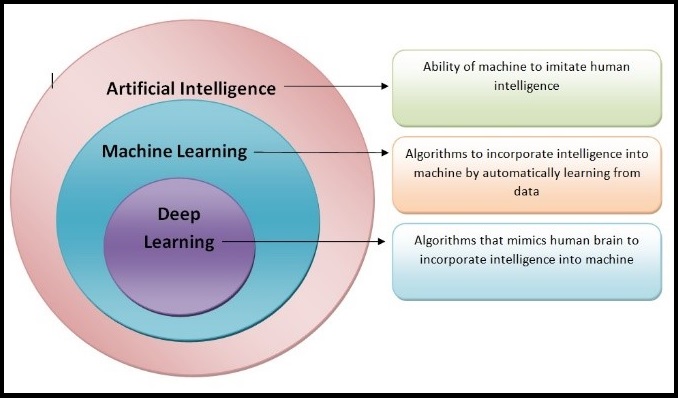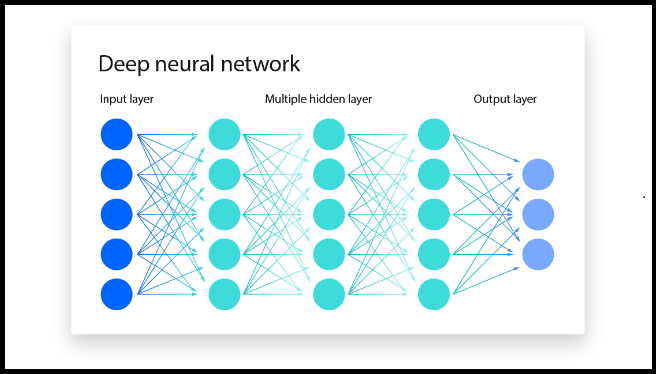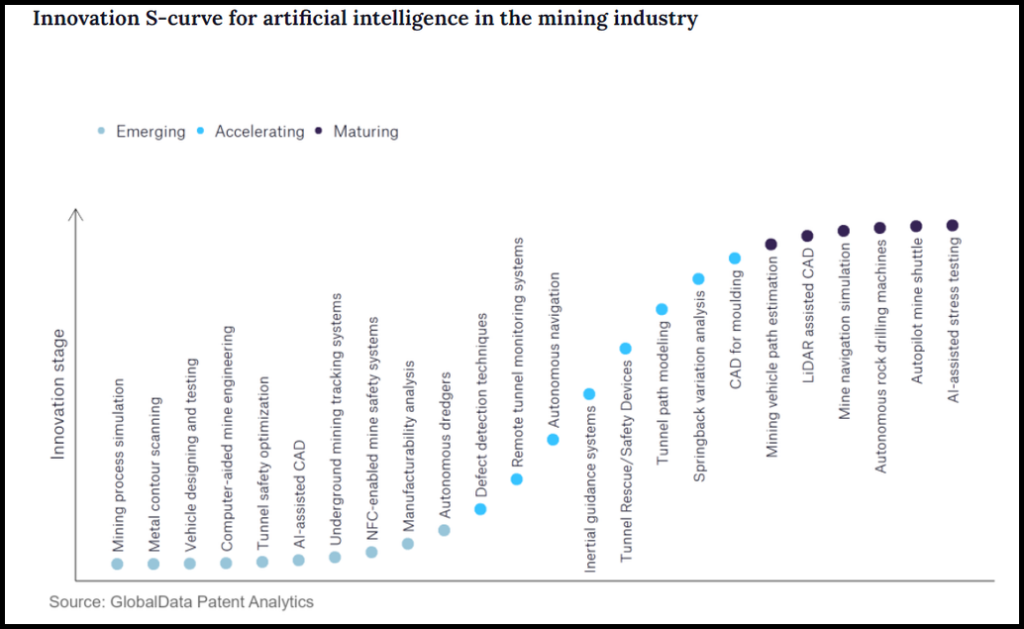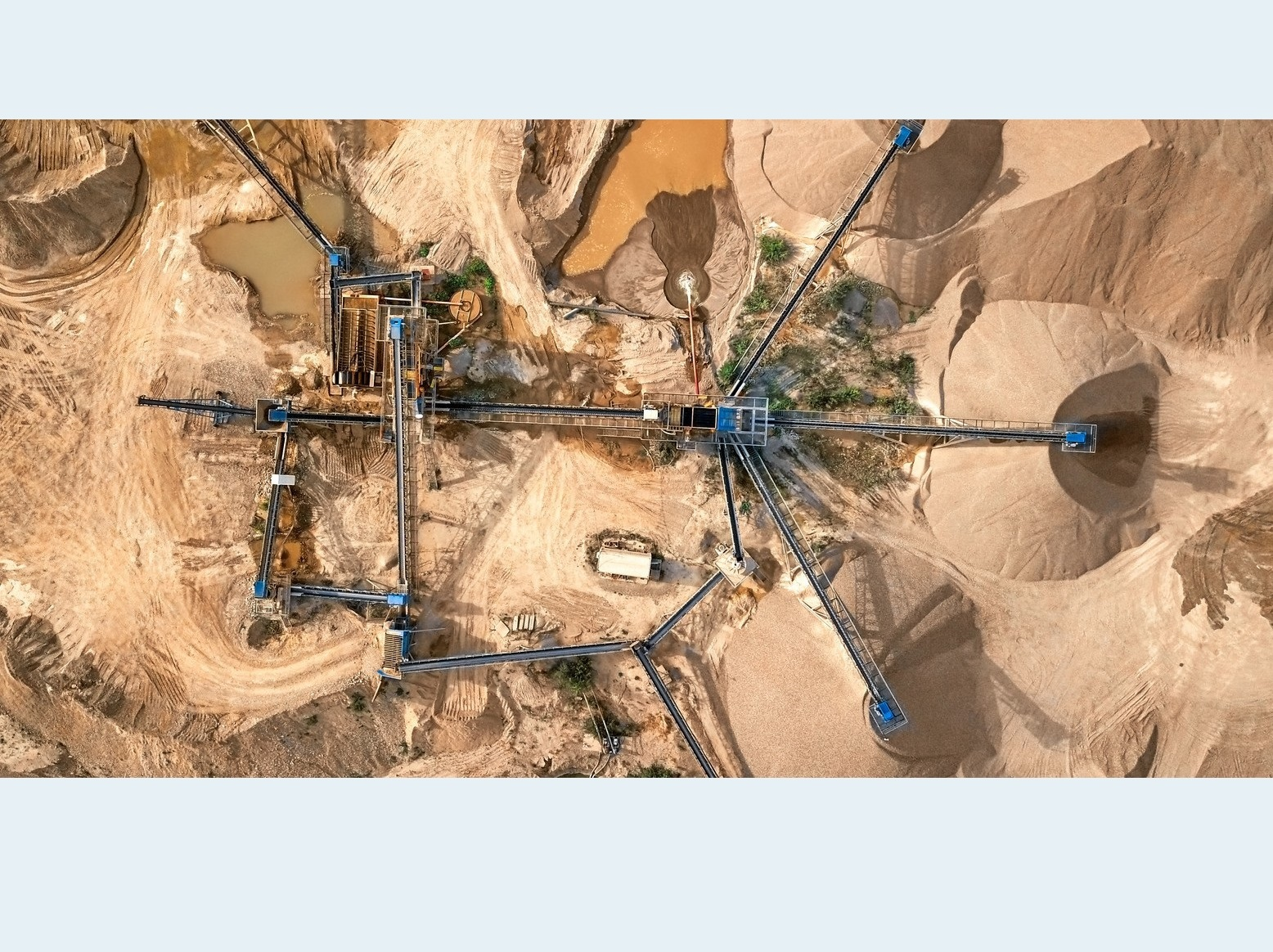
Artificial Intelligence in Mining
Introduction
Artificial intelligence (AI) is all about giving computers and machines the ability to act intelligently like humans do. This involves solving problems and making decisions based on available information. To achieve this, scientists use a toolbox of techniques called AI techniques.These are methods for building smart systems. Some of the important tools in this toolbox include machine learning (ML), deep learning (DL), computer vision (CV), and natural language processing (NLP).
and making decisions based on available information. To achieve this, scientists use a toolbox of techniques called AI techniques.These are methods for building smart systems. Some of the important tools in this toolbox include machine learning (ML), deep learning (DL), computer vision (CV), and natural language processing (NLP).
Imagine AI as a tree with different branches for learning. Machine learning is a major branch, and deep learning is a specialized branch that stems from ML.
- ML uses simpler neural networks, often with one or two layers.
 ML algorithms often require more human intervention in setting up and fine-tuning the learning process.
ML algorithms often require more human intervention in setting up and fine-tuning the learning process. - DL utilizes much more complex networks with many layers, allowing them to identify intricate patterns in data. DL can learn more independently, automatically extracting features from data and improving with more data.
- CV equips machines with the ability to see and understand the world from images and videos.
- NLP helps machines understand and process human language
Challenges in Current Practices
- Finding valuable resources at new mining sites is getting tougher. Ore grades are dropping, and new deposits are often scattered and widespread. This makes securing new resources a bigger challenge.
- Mining costs are rising due to increase in input work such as fuel, inherent cost in equipment and environmental impacts. All this puts pressure on mines to be more productive.
- Safety and rising accidents due to higher depths, remote locations and terrains.
Using AI technologies, the mining industry can overcome its challenges while enhancing efficiency, safety, and sustainability. AI technologies can analyse large volumes of data, mechanize tasks, and improve decision-making processes.
Importance of AI in Mining
| Mining firms will spend $218m on AI platforms worldwide by 2024. This is up from $76m in 2019, representing a compound annual growth rate (CAGR) of 23.4%. |
Application of AI in Mining
According to source foresights, which map out the S-curve for the mining industry using innovation intensity models based on more than 350,000 patents, indicates that over 150 innovation areas, will play a key role in shaping the future of the industry.
Within the emerging innovation stage, tunnel rescue/safety devices, CAD for moulding, and mining process simulation are disruptive technologies that are in the early stages of application and should be tracked closely. Autonomous navigation, defect detection techniques, and remote tunnel monitoring systems are some of the accelerating innovation areas, where adoption has been steadily increasing. Among maturing innovation areas are autopilot mine shuttle and mine navigation simulation, which are now well established in the industry.
With AI technologies, the mining industry can tackle its challenges while boosting efficiency, safety, and sustainability. Several prominent companies have already implemented these technologies.
- AI can aid mining companies analyse large volumes of geological data, satellite imagery, and historical records to identify potential mineral deposits. (GoldSpot)
- AI can help with mining exploration by analysing huge amounts of data, identifying on-site targets and providing insights on both. It provides greater efficiency on site with regards to both time and cost. (Barrick Gold Corporation)
- Autonomous vehicles can make working conditions safer in mining as they do not have to attempt to reach potentially dangerous areas of a site. (Komatsu)
- AI predictive maintenance models have the capacity to evaluate variables that reflect an asset’s current status, make predictions based on usage trends and consequently inform maintenance teams of potential equipment failures in advance. (ABB Global)
- AI-based sorting systems can identify valuable minerals from waste rock in real-time and ultimately improve recovery rates and reduce processing costs as a result. (Vale)
- There are lots of benefits to AI being used to support decision making, including better worker safety, improvement of previously lengthy processes and cost reduction. (Anglo American)
- AI in mining can work to reduce environmental impact and risks on location by analysing data quickly and efficiently. (BHP)
| Case study: Analytics optimizes transportation equipment use (Transport Output rises 8%) |
AI’s Future Role in Mining Industry
- Detection of Hazards: AI can detect hazardous gases, toxic dust, and radiation in mines, enhancing safety and reducing risks.
- Autonomous Samplers: These can sample minerals and toxic materials without requiring human access to hazardous areas.
- AI-based Mineral Sorting: AI systems can differentiate useful minerals from waste, using various physical, chemical, or mineralogical properties.
- Reduction of Hazardous Tasks: AI can be used to automate dangerous tasks such as blasting, transporting, and logistics. This automation can significantly reduce the risk of accidents and fatalities by eliminating exposure to dangerous gases and dust.
- Autonomous Support Systems: Companies are researching AI-based systems that can autonomously support mining operations, reducing the need for human intervention in delicate and risky processes.
Challenges of AI in Indian Mining
AI adoption in Indian mining is in its early stages, but several companies are exploring its possibilities. The use of AI in Indian mining presents a mixed picture, with both exciting opportunities and significant challenges to overcome.The mining sector industry faces several challenges that hamper the adoption of AI technologies
- There is a significant lack of professionals trained in AI within the mining workforce, which hampers the effective deployment and maintenance of AI systems.
- Remote locations in the Indian mining sector often lack reliable connectivity, making it difficult to capture and maintain the high-quality, integrated data essential for effective Al implementation.
- There is often a lack of awareness about the potential benefits of AI within the industry.
- The Indian mining sector is heavily regulated, and navigating these regulations can be complex and time-consuming. This bureaucratic environment can slow down the adoption of new technologies, including AI.
- Safeguarding against data security risks is another critical issue.
Geographic Distribution of AI Innovation in Mining
Summary
Artificial intelligence (AI) stands at the forefront of transforming the mining industry, offering unprecedented opportunities to enhance efficiency, safety, and sustainability. By leveraging AI techniques such as machine learning, deep learning, computer vision, and natural language processing, mining companies can revolutionize every facet of their operations, from exploration to extraction and beyond.AI empowers miners to unlock valuable insights from vast datasets. By analyzing geological data, satellite imagery, and historical records, AI can pinpoint potential mineral deposits with accuracy. This not only streamlines exploration but also minimizes environmental impact.While AI adoption is on the rise, there are hurdles to overcome. The industry needs a skilled workforce, reliable data infrastructure, and streamlined regulations to fully embrace this transformative technology.By leveraging AI, mining companies can unlock significant economic, environmental, and safety advantages. This paves the way for a more productive and sustainable future for the mining industry.
References
What is Artificial Intelligence (AI)? | IBM. (n.d.). https://www.ibm.com/topics/artificial-intelligence
Kothari, S. (2023, July 26). Top artificial intelligence techniques: Cracking the code. Simplilearn.com.https://www.simplilearn.com/tutorials/artificial-intelligence-tutorial/top-ai-techniques#what_is_artificial_intelligence
Milewski, A. (2023, September 20). The AI Revolution in mining: Opportunities and Risks – The Oregon Group – Investment Insights – The Oregon.The Oregon Group – Investment Insights.
https://theoregongroup.com/energy-transition/technology/the-artificial-intelligence-revolution-in-mining-opportunities-and-risks/
Woetzel, J., Sellschop, R., Chui, M., Ramaswamy, S., Nyquist, S., Robinson, H., Roelofsen, O., Rogers, M., Ross, R., & McKinsey & Company. (2017). BEYOND THE SUPERCYCLE: HOW TECHNOLOGY IS RESHAPING RESOURCES.
https://www.mckinsey.com/~/media/McKinsey/Business%20Functions/Sustainability/Our%20Insights/How%20technology%20is%20reshaping%20supply%20and%20demand%20for%20natural%20resources/MGI-Beyond-the-Supercycle-Executive-summary.pdf
Artificial intelligence innovation: Leading companies in autonomous navigation for the mining industry – Mine | Issue 131 | August 2023. (2024, February 16). https://mine.nridigital.com/mine_aug23/artificial-intelligence-innovation-leading-companies-autonomous-navigation-minin
AI and Mining – a brave new frontier – RIB. (n.d.). RIB Software. https://www.rib-software.com/en/blogs/ai-and-minings-brave-new-frontier#:~:text=Currently%2C%20the%20mining%20industry%20spends,information%20being%20collected%20and%20correlated.
Barrick Gold Corporation. (n.d.). Barrick Gold Corporation | LinkedIn. https://www.linkedin.com/company/barrick-gold-corporation/
Artificial intelligence assists in sustainability goals up to safety. (n.d.). Vale. https://vale.com/w/artificial-intelligence-assists-in-sustainability-goals-up-to-safety
FutureSmart MiningTM | Anglo American Company Overview. (n.d.). https://www.angloamerican.com/futuresmart/futuresmart-mining
Komatsu. (n.d.). Electric drive mining trucks. Komatsu. https://www.komatsu.com/en/products/trucks/electric-drive-mining-trucks/
ABB. (n.d.). Predictive maintenance in mining. ABB. https://new.abb.com/mining/services/advanced-digital-services/predictive-maintenance-mining
Cognizant. (n.d.). Analytics optimizes transportation equipment use. Cognizant. https://www.cognizant.com/en_us/case-studies/documents/analytics-optimizes-transportation-equipment-use-codex3733.pdf
Bessis, N., & Dobre, C. (2019). Artificial intelligence, machine learning, and autonomous technologies in the mining industry. ResearchGate. https://www.researchgate.net/publication/335542028_Artificial_Intelligence_Machine_Learning_and_Autonomous_Technologies_in_Mining_Industry
Supported by: Girish Kulkarni, Leo Christy, Sonia, Akshay Tari, Ashwini H.


